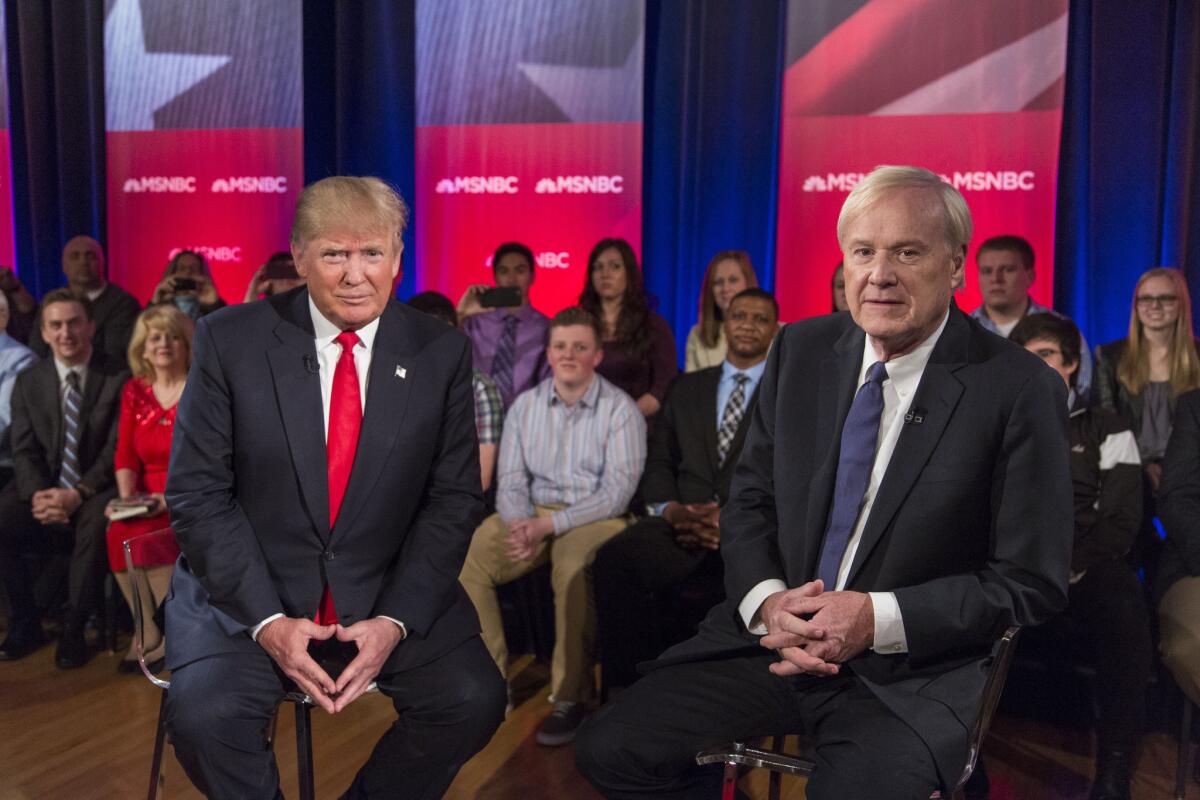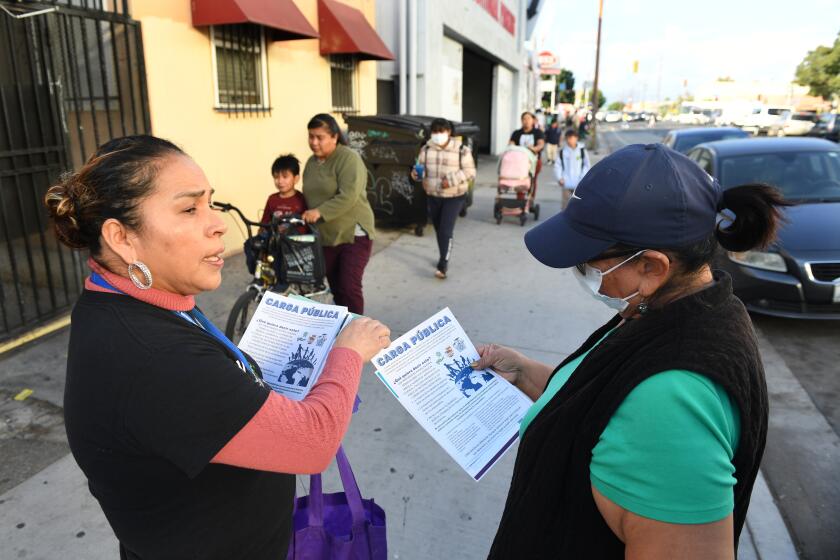Why it took two weeks for a Donald Trump attack ad to anger people

- Share via
Reporting from Washington — If you’re running a political campaign and want an effective ad attacking your opponents, you need not only to be clever, you have to get the timing right.
That’s a key, early finding from a team of researchers who have set out to answer a question on which hundreds of millions of dollars in campaign spending turn every four years: How do the ads that stream into our living rooms actually change the minds of voters?
By far one of the most effective ads the researchers studied so far was a spot titled “Quotes” that attacked Donald Trump for his insults of women. The ad, produced during the Republican primaries by Our Principles PAC, a group formed by Republicans opposed to Trump, featured female narrators reading statements by Trump that disparaged women.
“Bimbo, dog, fat pig,” the narrators read, reprising some of Trump’s most controversial comments. After nearly a minute of such remarks, the ad concludes: “If you believe America deserves better, vote against Donald Trump.”
The ad obviously did not stop Trump’s victory in the Republican primaries. But the research indicates that it — or something like it — could have high impact with general-election voters.
The researchers — a team of political scientists led by Lynn Vavreck of UCLA and John Geer of Vanderbilt University in Nashville — have set out to fill in some of the gaps in our knowledge of how political advertising works. Each week, as part of a project dubbed SpotCheck, they show pairs of political ads to a representative sample of 1,000 American adults to see which ads move voters and to tease out some of the reasons why.
Their project gauges the effectiveness of ads by measuring how much an ad engages viewers and whether it changes how the voters see the candidates. The Times plans to follow the progress of their research during the presidential campaign, writing periodically about what they learn and the insights their findings offer into how candidates influence voters.
Election 2016 | Live coverage on Trail Guide | Track the delegate race | Sign up for the newsletter
The results on “Quotes” were “one of the most interesting things that I’ve seen in my 15 years” of studying the subject, Vavreck said, because they illustrated “how important it is to get the timing right.”
When tested in the first week of April, “Quotes” scored a 783 on the researchers’ SpotCheck effectiveness scale, the second-highest score of any ad tested to date. (The highest so far was a pro-Trump ad.)
Compared with people who did not see the ad, those who watched “Quotes” were significantly more likely to end up with an unfavorable view of Trump — 64% of those who saw the ad viewed him unfavorably, versus 55% of those who did not see it. The difference primarily involved women. Those who watched the ad were 19 points more likely to disfavor Trump than those who had not.
Crucial to its effectiveness, 83% of the people who saw the ad in the test said it made them “angry.”
Just two weeks earlier, however, the researchers had tested the same spot and found something very different: At that time, it had less impact on Trump’s favorability, fewer viewers were engaged by it or said that it made them angry and fewer rated it as either “fair” or “memorable.”
Overall, rather than being among the most effective ads, “Quotes” in that test ranked as middling.
The reason for the large discrepancy is not some random fluctuation, said Vavreck. Instead, the difference reflects the impact of intervening events.
When the ad was first released and initially tested, Trump’s attitudes toward women, although controversial, were not a prime topic of political conversation. But then, on March 30, in a town hall interview with MSNBC’s Chris Matthews, Trump said that “there has to be some form of punishment” for women who have illegal abortions.
As news rapidly spread about the remark, Trump’s campaign tried to walk it back, issuing a statement saying that Trump believed that doctors who perform abortions should be punished, but not the women who undergo the procedures. The conflicting statements only heightened coverage of the issue.
“The conversation nationally about politics for three days turns to, ‘Wow, what does he really mean by that?’” Vavreck said. When the researchers tested the ad a few days later, “The effectiveness gets turned way up.”
In other words, it’s not enough for an ad simply to be clever or have good visuals. It also has to connect with the audience at a time when voters are primed to pay attention to the message.
That’s a key element for campaign strategists. Political ads can have an important effect on shifting how voters see a candidate or an issue, but that effect seldom lasts for more than a few days. Strategists need to move rapidly to take advantage of an issue when an event puts it in the spotlight, the research indicates.
The ad’s ability to move voters also helps demonstrate a theme that Geer has emphasized for many years in his work: Negative ads, for all the criticism they receive, often provide information that voters find useful.
Both times the ad was tested, more than six in 10 viewers rated it as negative. But that did not stop it from affecting their views. In the second test, when the ad had its greatest effectiveness, a majority rated it as “fair.”
Although commentators often denounce negative ads — and the public dislikes them in theory — the evidence suggests that in practice, voters often find them useful. There is also little evidence that negative ads turn off people from voting — indeed, campaigns that feature sharp attacks between candidates often also have high turnout.
That will be important in 2016. With both Trump and Hillary Clinton heading toward the general election campaign carrying highly unfavorable images, this year’s campaign likely will test voters’ tolerance for negativity.
For more on politics and policy, follow @DavidLauter
ALSO:
Be nice to Hillary Clinton online — or risk a confrontation with her super PAC
Obama is more popular than he has been in years. So why is he complaining?
Donald Trump’s latest campaign shifts are not likely to be his last
UPDATES:
12:13 p.m.: This article has been updated to add additional data from the research findings.
This article was originally published at 11:44 a.m.
More to Read
Get the L.A. Times Politics newsletter
Deeply reported insights into legislation, politics and policy from Sacramento, Washington and beyond. In your inbox twice per week.
You may occasionally receive promotional content from the Los Angeles Times.











